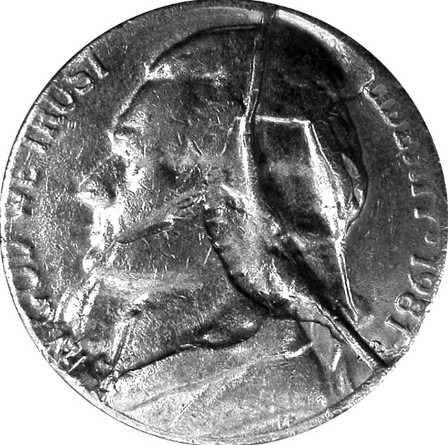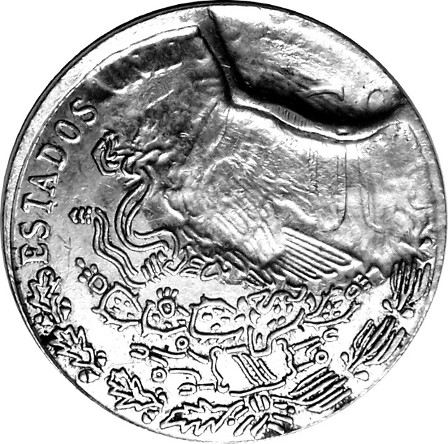PART IV. Die Errors:
Split Dies:
Asymmetrical split die
Definition: A split die develops when a rim-to-rim die crack extends deep into the die neck and die shank (shaft). The width of the split is proportional to its depth of penetration. Split dies usually divide the die face into two sub-equal parts. These may be termed “median”, “bisecting”, or “symmetrical” split dies. When the split is off to one side, we call it an asymmetrical split die. The path can be straight, curved, or irregular.
An asymmetrical split die shows only lateral spread. This allows collectors to discriminate this error from retained cuds. While the latter may show lateral spread, they also exhibit vertical displacement and/or horizontal offset (see retained cud).
Below is an asymmetrical split die on the obverse of a 1981 (P or D) nickel. The surface appears irregular and fuzzy because it also has a multi-level strike-through error, evidently produced by some thin, folded metal. That metal was probably derived from a torn and crumpled die cap. Split die errors often co-occur with capped die strikes.

